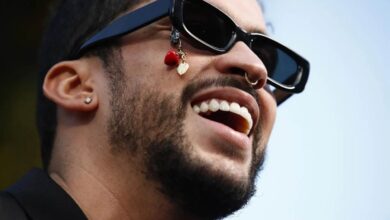“Motomami”: What to Expect from Rosalía’s Next Album?
March is the month chosen for the release of one of the most anticipated albums of the first half of 2022. What can we do? expect from “Motomami”, Rosalía’s next album?

Photo: IG-rosalia.vt
LatinAmerican Post | Theoscar Mogollón
The countdown to hear what’s new from Rosalía and witness her transformation is already underway. Next March 18 will be the release of the third album by the Spanish artist, whose name “Motomami” comes with a series of enigmas that make it the most anticipated of the first half of 2022. Are we facing a new, innovative work of art? and avant-garde in the history of urban music?
The worldwide success achieved by Rosalía after her album “El mal Querer” positioned her as one of the revelation singers in the genre. That experimental and conceptual album told a violent story in its 11 songs, accompanied by a captivating voice and a mix of both modern and uncommercial styles. It was from then on that her career was catapulted to new levels to the point of becoming the great artist that she is today.
“It is the most personal story I have ever told. In my head, “Motomami” makes sense as a concept, as a self-constructing female figure. So, this is how it works: it is almost like a self-portrait when an artist makes a self-portrait in the context of the modern world,” Rosalía said for Rolling Stone
. Now, with a pandemic in between, Rosalía seeks to outdo herself and for that has worked hard on “Motomami”, an album about which little is known but which in turn has generated enormous expectations among its fans and music critics. To date, she has only released two tracks that give us an idea of what is to come; “La Fama”, a bachata with the collaboration of The Weeknd; and “Saoko”, a tribute to the classic reggaeton that has been the source of her inspiration.
Also read: The Karol G Phenomenon: Why Is She So Relevant?
“Saoko”: adrenaline from start to finish
As she has become accustomed to us, Rosalía left more than one speechless when she dared to experiment with bachata, but the surprise was greater when The Weeknd was with her. At that precise moment, we understood that the Spanish were 100% dedicated to her career, her transformation, and what is possibly her best album so far. It was then that she released “Saoko”, a single that contrasts with “La Fama” although it reveals her versatility to take over any musical style.
For the most “old school” of reggaeton, the name of this single should remind them of the famous 2004 song by Daddy Yankee and Wisin, and certainly, that is part of it. The same artist confessed in an interview with Rolling Stone magazine that she used that sample because it was “the most direct tribute I can make to classic reggaeton, a genre that I love and that has been a constant and great inspiration throughout the project” Motomami.” And it is not for less.
“Saoko” is a song that combines distorted chords, jazz arrangements, and the vintage touch of reggaeton, which together create a work in the very pure style of Rosalía. Her video clip, moreover, is capable of taking us on a joy ride full of adrenaline and high octane, where the singer is accompanied by female motorcyclists and gives meaning to the title of her new album by becoming a true “mommy bike”.
Throughout the 2:20 that this single lasts, we can realize Rosalía’s ability to create an experimental reggaeton song to later deconstruct the genre and modify the structure of what it is today. Who would think of adding a piano in the middle of a reggaeton song? With this, the Spanish assure us that she is willing to experiment like never before and to break all the schemes.
What to expect from “Motomami”?
There are many questions that arise and that will be answered in March. With what Rosalía has shown so far, we could anticipate that “Motomami” will be a masterpiece based on progressions, synthesizers, and saturated organs, all with the intention of showing the roots and capabilities of an artist whose goal is to continue transforming herself.
We have become accustomed to catchy choruses, beats, and homogeneous dem bows, which will probably appear, although to a lesser degree in order to give more prominence to experiments with lyrical, rhythmic, and sound explorations. Contemporary urban music will be its flag in “Motomami”, with styles that will range from champeta and flamenco to hip-hop and bachata. The only truly certain thing is that with Rosalía there is room for everything.




